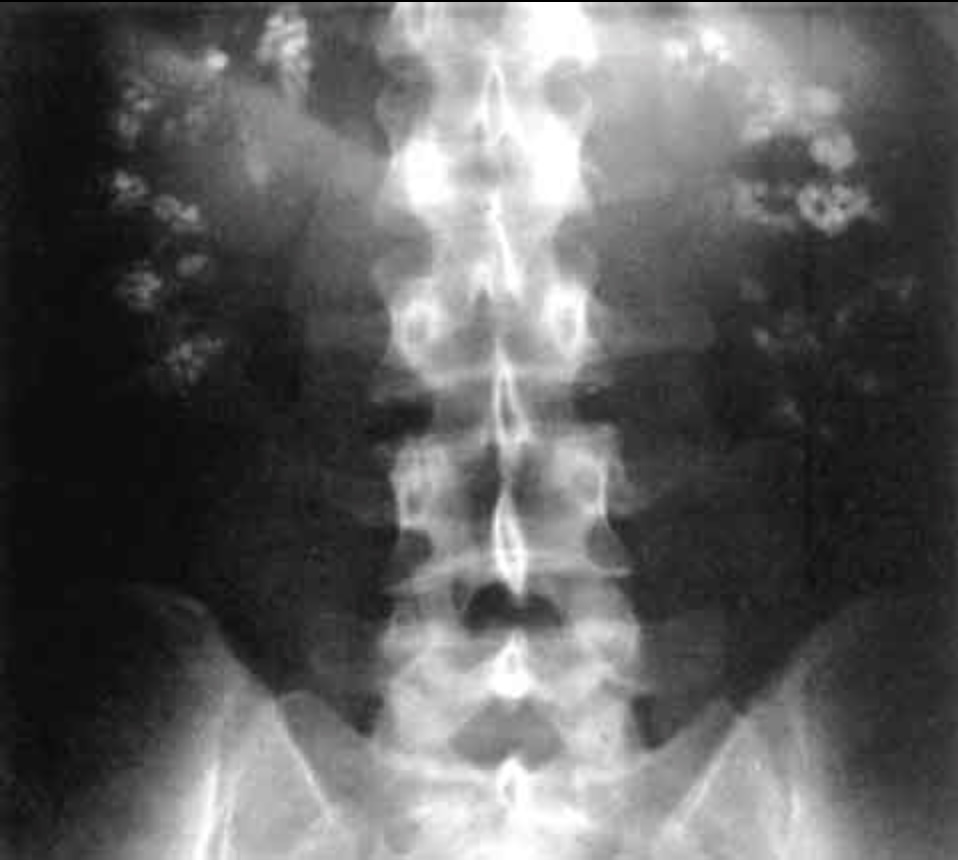Playlist
Show Playlist
Hide Playlist
Renal Tubular Acidosis (RTA) in Children: Type 2 and 3
-
Slides RTA Pediatrics.pdf
-
Download Lecture Overview
00:01 Okay, let’s shift to type 2 RTA. 00:06 Again, a non-gap acidosis, no other known cause. 00:11 So here is this patient’s loop of Henley, the proximal tubule and the cortical collecting duct. 00:18 In this case, you’ll note that while much of the bicarb is lost, it’s either reabsorbed in the proximal tubule or a small percent later on. 00:29 So let’s look closely at that proximal tubule. 00:33 Here is the depiction of what exactly is going on and it has a lot to do with carbonic anhydrase. 00:41 You can look at this and study it in your free time, but the main end of the story is that the problem here in type 2 is a loss of bicarbonate in the proximal tubule of the kidney. 00:54 This system isn’t working and they lose bicarbonate. 00:59 So in a patient with type 2 RTA, if their system wide plasma bicarb is low, they’re going to have a low pH urine. 01:10 However, if their bicarbonate level is normal, they will actually have a normal, like slightly high urine pH. 01:18 In other words, if overlying on a high urine pH to make the diagnosis, they can’t be in a baseline acidotic state. 01:26 If you had a patient with type 2 RTA, for example, who had gastroenteritis and had a little bit of acidosis, this would be a bad time to check their urine pH as a way of making that diagnosis. 01:38 Okay. 01:39 There are many potential causes of type 2 RTA. 01:43 One of the important ones is called Fanconi’s syndrome. 01:48 In this syndrome, patients are not just losing bicarbonate in their proximal tubule, they are losing a whole bunch of stuff. 01:56 This can include not only bicarbonate, but they can lose glucose. 02:00 They can lose uric acid. 02:02 They might lose phosphate or citrate or calcium. 02:06 They may lose potassium, proteins and they may lose amino acids. 02:11 These patients have profound urinary loses. 02:15 What you usually see is that the urine pH is low. 02:21 Okay. 02:22 Causes of Fanconi’s syndrome are multiple. 02:25 They include drugs. 02:27 Drugs that can cause this includes sulfas, acetazolamide which is carbonic anhydrase inhibitor or tetracyclines. 02:36 Patients may have this if they have vitamin D deficiency, if they have received a renal transplant, if they suffer from heavy metal toxicity. 02:44 In some cases, it’s genetic and in adults, this can be caused by multiple myeloma, but we really don’t often see multiple myeloma in children. 02:56 So the management of RTA type 2 includes large doses of bicitra. 03:01 We usually are required to replace potassium because they’re losing all kinds of things. 03:06 And it’s interesting that thiazides may be helpful. 03:09 What thiazides do is they induce the diuresis and therefore raise the proximal tubule threshold for bicarbonate wasting. 03:19 Okay. 03:20 Type 3 RTA, this one will be blessedly brief because it’s exceptionally rare. 03:27 This is a primary carbonic anhydrase deficiency. 03:32 It’s really a combination of type 1 and type 2 RTA and it can result in intellectual disability, cerebral calcifications and osteopetrosis. 03:43 This is so rare in fact that most books completely ignore the existence of type 3. 03:48 I’m really only including it here for complete sake. 03:52 I wouldn’t spend a lot of time studying type 3 RTA.
About the Lecture
The lecture Renal Tubular Acidosis (RTA) in Children: Type 2 and 3 by Brian Alverson, MD is from the course Pediatric Nephrology and Urology. It contains the following chapters:
- RTA Type 2
- RTA Type 3
Included Quiz Questions
Fanconi syndrome causes proximal tubule losses of which of the following substances?
- All of these answers are correct.
- Protein
- Glucose
- Bicarbonate
- Calcium
Which of the following best describes the underlying pathology in type 2 renal tubular acidosis?
- Loss of HCO3- in the proximal tubules of the kidneys
- Loss of H+ in the proximal tubules of the kidneys
- Loss of H+ in the distal tubules of the kidneys
- Loss of HCO3 – and Cl- in the collecting tubules of the kidneys
- Loss of HCO3- in the distal tubules of the kidneys
Which of the following is NOT a cause of Fanconi’s syndrome in children?
- Multiple myeloma
- Carbonic anhydrase inhibitors
- Severe vitamin D deficiency
- Heavy metal toxicity
- Renal transplant
Customer reviews
5,0 of 5 stars
| 5 Stars |
|
1 |
| 4 Stars |
|
0 |
| 3 Stars |
|
0 |
| 2 Stars |
|
0 |
| 1 Star |
|
0 |
Excellent lecture, it's never talked about in our lectures during medical school. Thanks!





